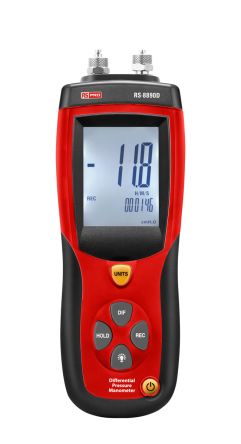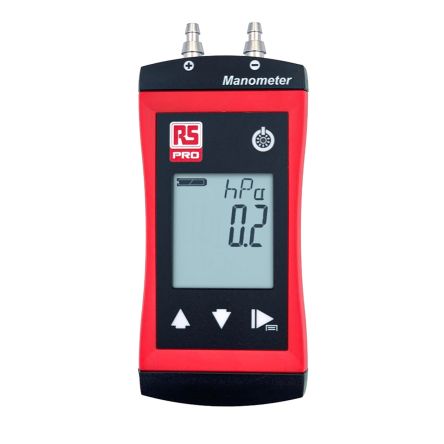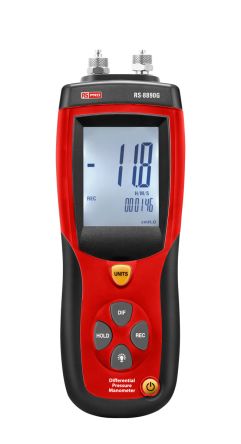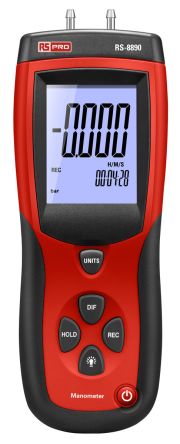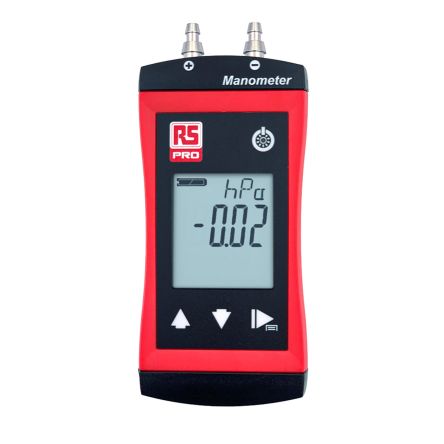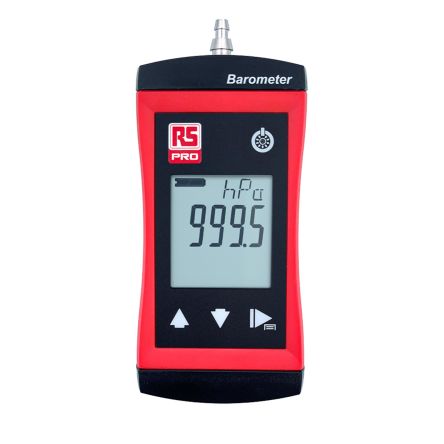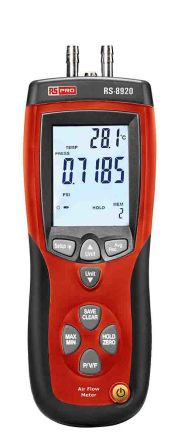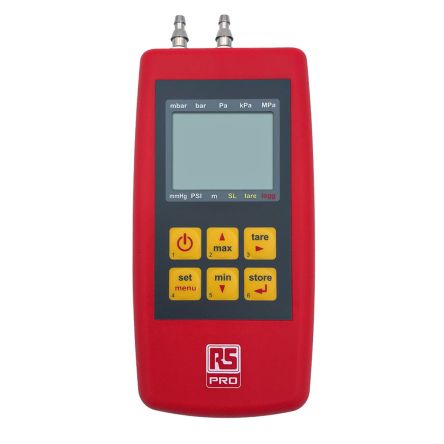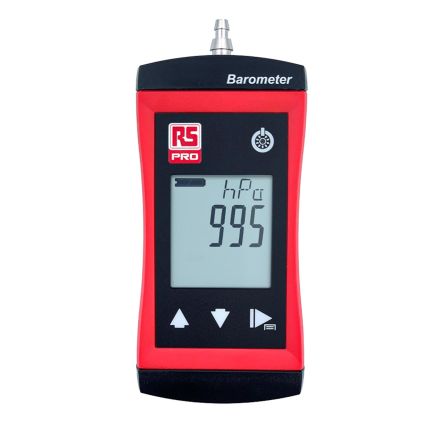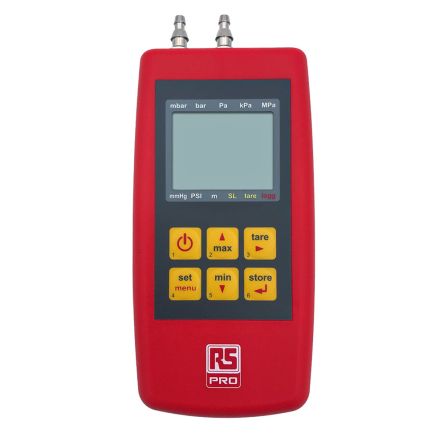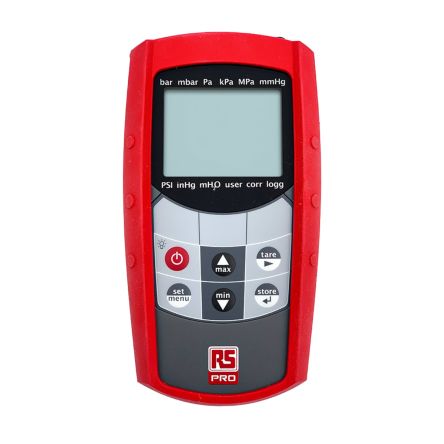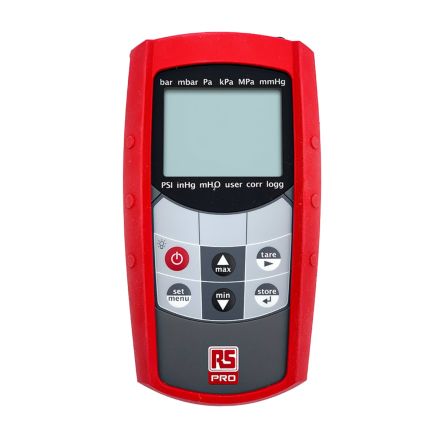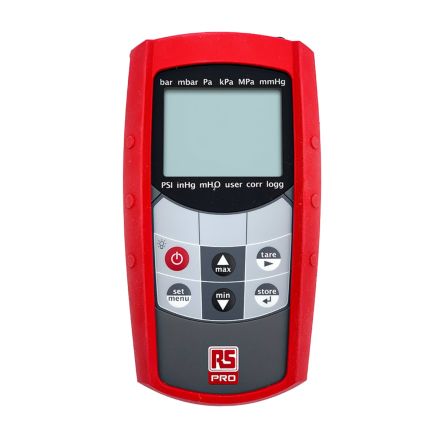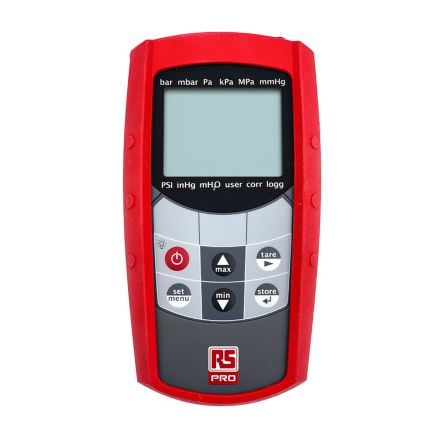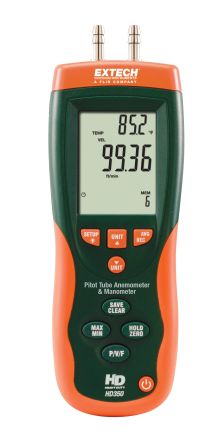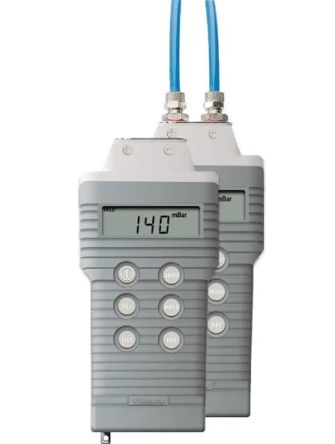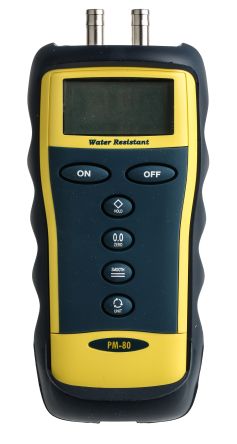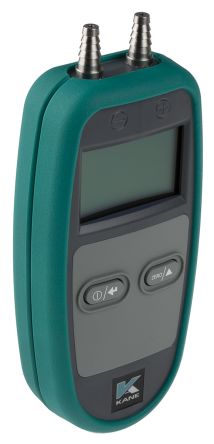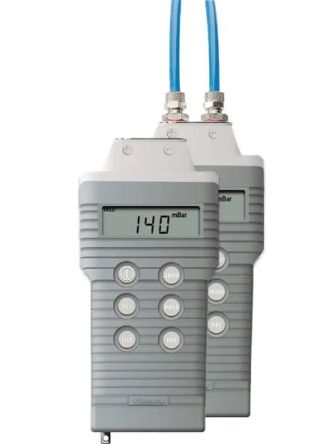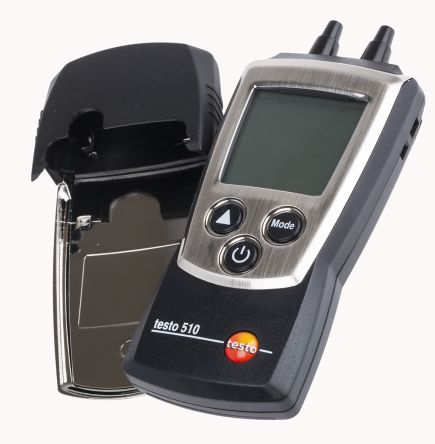- Automation & Control Gear
- Cables & Wires
- Enclosures & Server Racks
- Fuses & Circuit Breakers
- HVAC, Fans & Thermal Management
- Lighting
- Relays & Signal Conditioning
- Switches
- Batteries & Chargers
- Connectors
- Displays & Optoelectronics
- ESD Control, Cleanroom & PCB Prototyping
- Passive Components
- Power Supplies & Transformers
- Raspberry Pi, Arduino, ROCK, STEM Education & Development Tools
- Semiconductors
Manometers
Manometers, commonly referred to as pressure meters, are essential scientific instruments used in various industries to measure air, gas or fluid pressure. These handheld, battery-operated gauges feature LCD displays for easy reading of results. Some units have an additional backlight function for use in awkward locations and low-light conditions.
Digital manometers utilize advanced sensors and sophisticated microprocessors to provide highly accurate measurements and readings. Many manometers also come equipped with software that allows data to be transferred to laptops, smartphones, or tablets for convenient storage and analysis.
What Are Manometers Used For?
Digital manometers are used by engineers and technicians for routine pressure tests, troubleshooting system failures, or detecting leaks. For example, in refrigeration systems, digital pressure meters can measure gauge pressure, vacuum, and temperature to diagnose potential issues.
Furthermore, manometers are versatile instruments that can establish flow and static pressure in gas systems and for pressure-drop testing in gas pipes. In particular, digital manometers are suitable for measuring absolute pressure, differential pressure, and gauge pressure. When used in conjunction with a pitot tube, a manometer can effectively convert pressure readings into air velocity (FPM).
How Does a Digital Manometer Work?
Electronic manometers utilise a pressure transducer that deflects in response to applied pressure. This deflection is then converted into an electrical signal by the transducer. The device's internal circuitry processes this electrical signal and calibrates it to provide a highly accurate pressure reading, which is then displayed on the digital readout.
Are Manometers and Barometers the Same?
Although both manometers and barometers measure pressure, they are distinct instruments with different applications. Barometers primarily measure atmospheric pressure, providing insights into weather patterns and altitude. Meanwhile, manometers measure the pressure of liquids or gases relative to an external source, which is commonly the Earth's atmosphere.
Here are some key differences between manometers and barometers:
- Shape and design: While manometers usually come with a U Shaped or L-shaped half-filled tube, barometers are often constructed with a large bowl with an upside-down glass tube or a connected sprout.
- Inner liquid: While both devices use mercury, manometers may also use lighter and less dense liquids, such as water, bromides, benzenes, and oil. Meanwhile, some barometers may use water or contain no liquid at all.
- Calculation mechanics: In manometers, one end is attached to a high-pressure gas while the other end remains open. Liquid or gas pressure is calculated through the change in liquid level along the open end. In contrast, barometers balance the liquid level inside the glass tube and the sprout, calculating pressure based on the liquid level changes in the glass tube.
- Applications: Barometers are commonly used in weather forecasting and altimetry, while manometers are used in various industrial, scientific, and medical applications.
Manometer Gauge Types
U-Tube Manometer
U-tube manometers are one of the simplest and most common types of manometers. They consist of a U-shaped tube partially filled with a liquid, typically mercury or water.
The difference in liquid levels between the two arms of the U-tube indicates the pressure difference between the two points being measured. U-tube manometers are often used for measuring low to moderate pressures in laboratory and industrial settings.
These manometers include no moving parts and require no calibration.
Enlarged-Leg Manometer
Enlarged-leg manometers are a variation of the U-tube manometer, featuring one leg with a larger diameter than the other. This design increases the sensitivity of the manometer, allowing for more precise measurements of small pressure differences.
Enlarged-leg manometers are often used in applications where higher accuracy is required.
Well-Type Manometer
Well-type manometers have one leg with a large reservoir or well, while the other leg is a simple, narrow tube. The area of the well is generally over ten times larger than the area of the tube.
This design allows for minute change in liquid level in the well to be reflected in a larger change in the height within the tube. Instead of measuring a differential height, as with a U-tube manometer, well-type manometers only require a single height to be measured.
Inclined-Tube Manometer
Inclined-tube manometers have one leg of the U-tube inclined at a 10-degree angle, increasing the sensitivity of the manometer.
The inclined design allows for a greater change in liquid level for a given pressure change, making it easier to read small pressure variations.
Key Features of Pressure Manometers
- Display: Manometers typically feature a digital display that provides a clear and easy-to-read pressure measurement. Some manometers may also have analogue displays or a combination of both.
- Measurement units: Manometers can display pressure measurements in various units, such as bars, millibars (mbar), pascals (Pa), and millimetres of mercury (mmHg).
- Accuracy: The accuracy of a manometer is crucial for reliable pressure measurements. High-accuracy manometers are essential for critical applications and calibration tasks.
- Range: Manometers are designed to measure pressure within specific ranges. Choose a manometer with a range that covers the expected pressure levels in your application.
- Data logging: Some manometers have data logging capabilities, allowing for continuous recording of pressure measurements over time. This is useful for monitoring pressure trends and identifying potential issues.
- Connectivity: Many digital manometers offer connectivity options for data transfer to computers or other devices for analysis and storage.
Applications of Industrial Manometers
Measuring Pipe Fluid Flows
Water manometer gauges are used to measure the pressure of fluids flowing through pipes, providing insights into flow rates, pressure drops, and potential blockages. This is crucial in various industrial processes, such as water distribution, oil and gas pipelines, and chemical processing.
Measuring HVAC System Pressure
****HVAC systems rely on proper air pressure for efficient operation. Manometers are used to measure air pressure in ducts and vents, ensuring balanced airflow and optimal system performance. This helps to identify leaks, blockages, or imbalances that may affect heating and cooling efficiency.
Measuring Gas Pressure
Manometers are essential for measuring gas pressure in various applications, including industrial processes, gas pipelines, and medical equipment. A gas manometer can accurately measure the pressure of gases, ensuring safe and efficient operation of gas-powered systems.
Leak Detection
Manometer testers can be used to detect leaks in pressurised systems by monitoring pressure changes over time. A drop in pressure can indicate a leak, which may result in water damage in homes and other buildings. Through monitoring, the prompt identification and repair of these systems can prevent further damage or safety hazards.
Calibration of Pressure Gauges
Manometers are often used as calibration standards for other pressure gauges, ensuring the accuracy and reliability of pressure measurements across various instruments.
How to Select the Right Manometer Pressure Gauge
Your task and the environment will influence your choice of digital pressure meter. Consider the following factors:
- Set-up: While some analogue manometers require more complex set-up of boxes, gas cylinders, and weights, digital options can be set up faster and simply.
- Pressure requirements: Select a manometer with a pressure range that encompasses the minimum and maximum pressure you expect to encounter in your application.
- Resolution: Consider the required resolution for your measurements. Higher resolution manometers provide more precise readings, which may be necessary for certain industrial applications. Likewise, digital manometers tend to have better accuracy for smaller pressure differences compared to analogue models.
- Differential, gauge, or absolute: Determine whether you need a differential manometer to measure the pressure difference between two points, a gauge manometer to measure pressure relative to atmospheric pressure, or an absolute manometer to measure pressure relative to a vacuum.
Trusted Electronic Manometers Manufacturer, Supplier and Distributor in Australia
RS Australia is a trusted and leading manufacturer, supplier, and distributor for manometers in Australia. We source our products from leading brands like Druck, Digitron, and Testo, ensuring that our customers have access to high-quality and reliable pressure measurement solutions.
Additionally, with manometers available at various price points ranging from AU$300 to AU$1700, there is a device to suit different budgets and needs. Furthermore, our in-house calibration services are also available if you need to fine-tune your manometer.
Beyond manometers, we also offer a comprehensive range of other measurement instruments to meet your diverse project needs, be it a voltmeter for voltage measurements or an infrared thermometer for temperature tests.
Buy a Manometer Tester Online from RS Australia
If you're looking to buy a manometer tester online in Australia, RS Australia is your one-stop shop for high-quality manometers with fast and reliable delivery nationwide. Our online platform provides a seamless shopping experience, allowing you to easily browse our selection, compare specifications, and find the perfect manometer for your needs.
With flexible delivery options, such as express and next-day deliveries, you can receive your manometer promptly and conveniently. To learn more about delivery fees and estimated delivery times, please visit our delivery information page.
